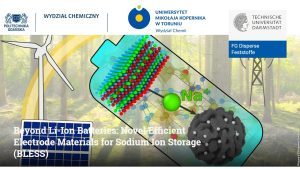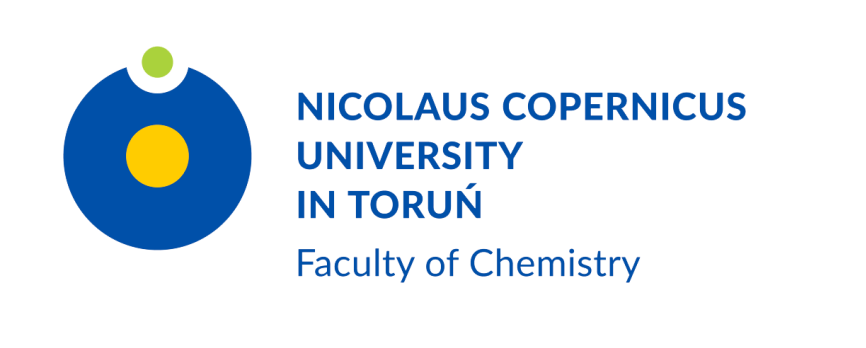RESEARCH PROFILE
(1) The influence of modification and functionalization of carbon materials on the adsorption processes of heavy metal ions and organic compounds from aqueous solutions – SB, GT.
(2) Electrochemical behavior of carbon materials in adsorption processes – SB, GT.
(3) Modification and characterization of carbon materials for catalysis, energy conversion, and storage applications – SB, GT, PM.
(4) Instrumental methods (SEM, TEM, AFM, IR, Raman, EDX, micro-IR, micro-Raman, SEM-EDX, TEM-EDX-EELS) in studying materials, particularly nanomaterials. Quantitative spectroscopy of EDX, IR and Raman. Access to the computing cluster (Poznan Supercomputing and Networking Center) – programs: Gaussian, Gromacs, Lammps – SB, PG, GT, PM.
(5) Using Monte Carlo and Molecular Dynamics computer simulation methods to describe interface phenomena occurring on carbon materials – PG.
(6) The use of quantum-chemical calculations to study intermolecular interactions and properties of disordered and chemically heterogeneous carbon materials – PG.
(7) Study of interfacial processes on disordered adsorbents – PG.

GROUP MEMBERS
Prof. dr hab. Stanisław Biniak (SB)
Dr hab. Piotr Gauden, prof. NCU (PG)
Dr Grzegorz Trykowski (GT)
Dr Mariusz Walczyk (MW)
PhD student: M.Sc. Piotr Madajski (PM)
PROJECTS, GRANTS
(1) NCN, Miniatura-1, 2017/01/X/ST5/01248, Synthesis of nano- dimensional carbon layers from the solid, liquid and gaseous phases and their characterization with combined spectral-microscopic techniques, implementation period 2017/18, contractor GT.
(2) NCN, Beethoven Classic 3, 2018/31/G/ST5/02056, BLESS – Beyond Li-ion Batteries: Novel, Efficient Electrode Materials for Sodium-Ion Storage, planned implementation 2020/23, contractors SB, GT, PM.
(3) The two research projects for the European Space Agency (ESA-ESTEC) „Support to Round Robin for ECSS Q 70 05 following IPN: a) Detection of organic contamination of the surface by infrared spectroscopy. b) Thermal vacuum outgassing test for the screening of space materials, according to ECSS (European Cooperation For Space Standardization)”, implementation period 2016/21, contractor GT.
(4) The two measurement projects (1) “Research on Bi2S3 and AgInS2 quantum dots activated by electron beam in TEM” and (2) “Search for Stone-Wales defects in graphene layers by the HR-TEM method” funding from the European Union’s Horizon 2020 research, and innovation programme under grant agreement No 823717 – ESTEEM3”, implementation period 2020/21, contractor GT.
(5) The research project „Experimental and theoretical research of nanostructured composite photosensitive layers” carried out from the funds of the University Centre of Excellence ” From fundamental optics to biophotonic applications” OptoFoto, implementation period 2021/22, contractor PG.
SELECTED PUBLICATIONS
(1) The characterization of activated carbons with oxygen and nitrogen surface groups, S Biniak, G Szymański, J Siedlewski, A Świątkowski, Carbon 35, 1799-1810 (1997).
(2) Influence of the surface chemistry of modified activated carbon on its electrochemical behaviour in the presence of lead (II) ions, A Światkowski, M Pakula, S Biniak, M Walczyk, Carbon 42, 3057-3069 (2004).
(3) Water adsorption on carbons-Critical review of the most popular analytical approaches, S Furmaniak, PA Gauden, AP Terzyk, G Rychlicki, Advances in colloid and interface science 137, 82-143, 2008.
(4) Estimation of the pore-size distribution function from the nitrogen adsorption isotherm. Comparison of density functional theory and the method of Do and co-workers, P Kowalczyk, AP Terzyk, PA Gauden, R Leboda, E Szmechtig-Gauden, Carbon 41, 1113-1125, 2009.
(5) Carbon dioxide adsorption-induced deformation of microporous carbons, P Kowalczyk, S Furmaniak, PA Gauden, AP Terzyk, The Journal of Physical Chemistry C 114 (11), 5126-5133, 2010.
(6) Multiwall carbon nanotubes purification and oxidation by nitric acid studied by the FTIR and electron spectroscopy methods, L Stobinski, B Lesiak, L Kövér, J Tóth, S Biniak, G Trykowski, J Judek, Journal of Alloys and Compounds 501 (1), 77-84 (2010).
(7) Noble metal modified TiO2 microspheres: Surface properties and photocatalytic activity under UV–vis and visible light, E Grabowska, M Marchelek, T Klimczuk, G Trykowski, Journal of Molecular Catalysis A: Chemical 423, 191-206 (2016).
(8) Highly porous silicon embedded in a ceramic matrix: a stable high-capacity electrode for Li-ion batteries, D Vrankovic, M Graczyk-Zajac, C Kalcher, J Rohrer, M Becker, C Stabler, G Trykowski, K Albe, R Riedel, ACS nano 11, 11409-11416 (2017).
(9) Urchin-like TiO2 structures decorated with lanthanide-doped Bi2S3 quantum dots to boost hydrogen photogeneration performance, M Miodyńska, A Mikolajczyk, B Bajorowicz, J Zwara, T Klimczuk, W Lisowski, G Trykowski, HP Pinto, A Zaleska-Medynska, Applied Catalysis B: Environmental 272, 118962 (2020).
(10) Chemical and structural properties of reduced graphene oxide—dependence on the reducing agent, B Lesiak, G Trykowski, J Tóth, S Biniak, L Kövér, N Rangam, L Stobinski, Journal of Materials Science 56, 3738-3754 (2021).


 ul. Gagarina 7, 87-100 Toruń
ul. Gagarina 7, 87-100 Toruń